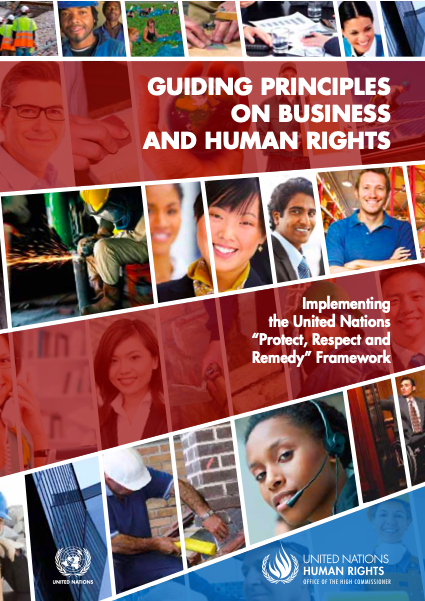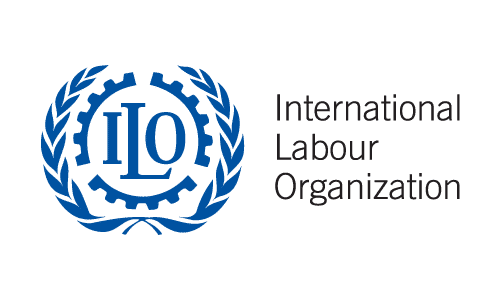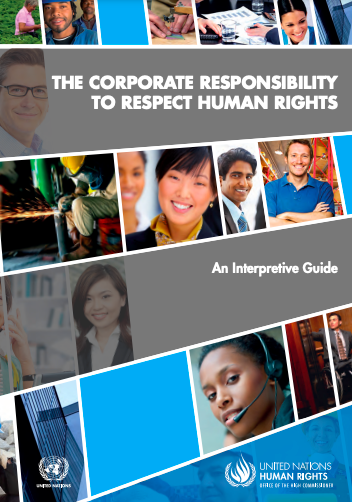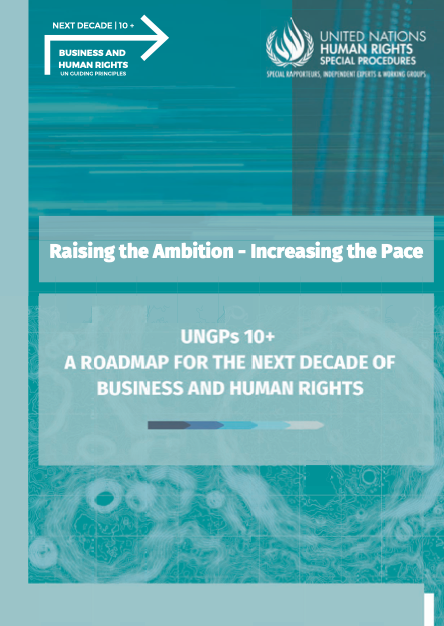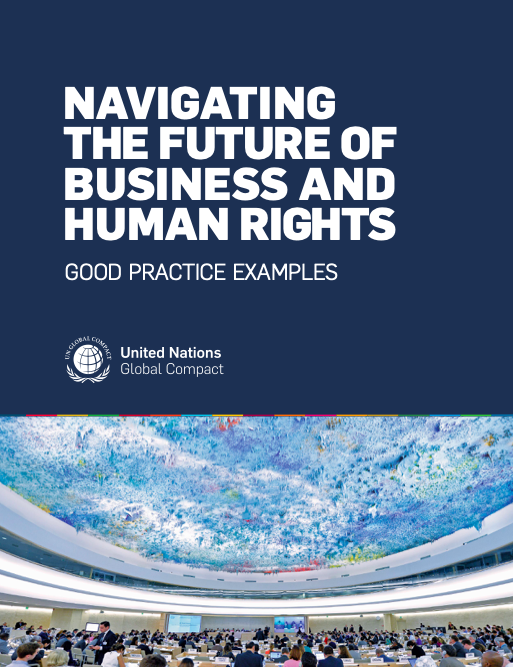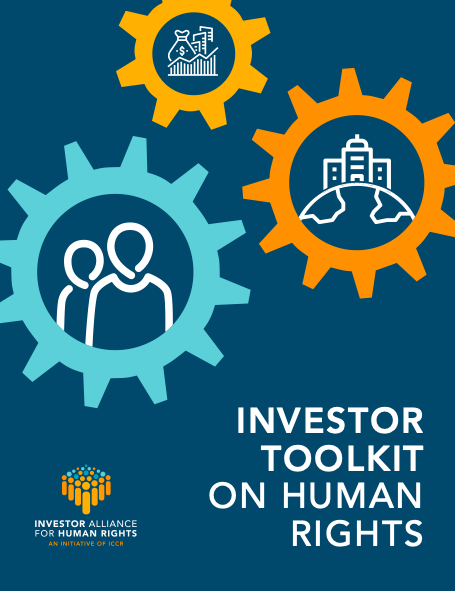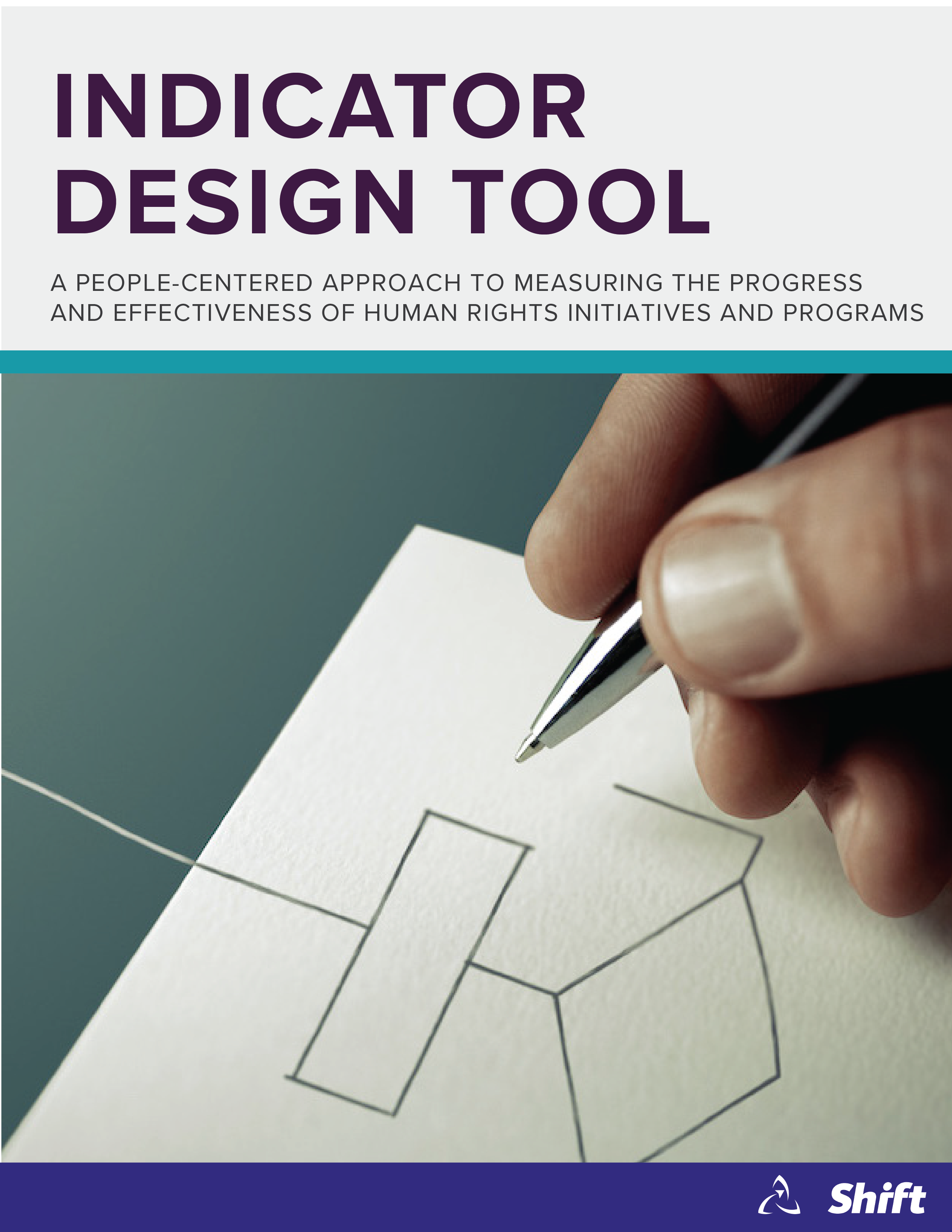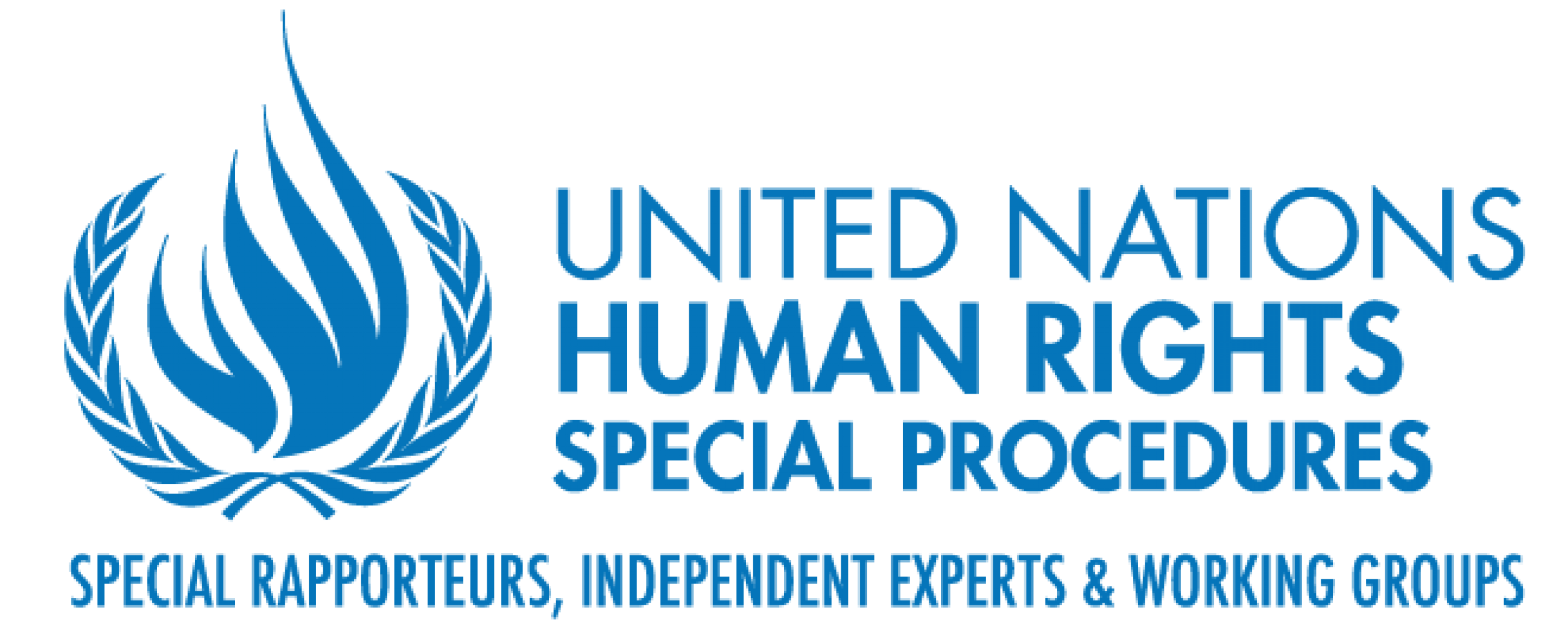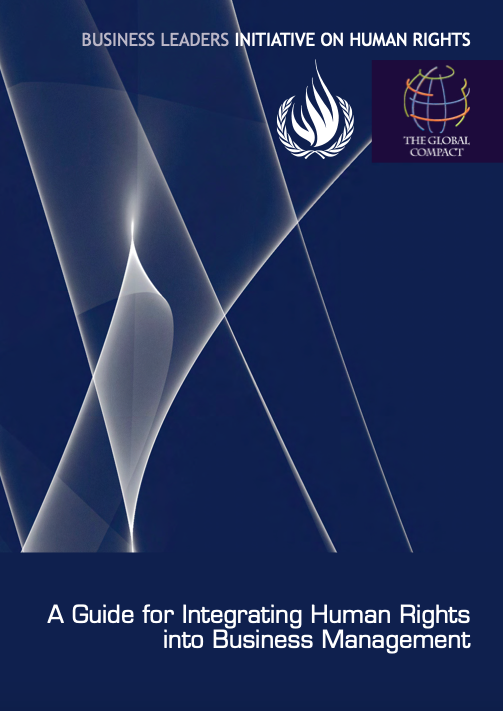General Resources
Description
Introductory resources and reference materials to help acquaint you with rights and wellbeing at work.
Share this Subissue on:LinkedIn
Resources
UN Guiding Principles on Business and Human Rights
The UN Guiding Principles on Business and Human Rights, also known as the “Protect, Respect, and Remedy Framework,” set out 31 principles for states and companies to prevent, address, and remedy human rights abuses committed in business operations and the communities around them. The framework is founded on three pillars: the state's duty to protect human rights; the responsibility of businesses to respect human rights; and access to remedy for victims of business-related abuses. This document is a foundational piece for companies on how to respect and advance worker and community human rights.
UN Guiding Principles Reporting Framework
This reporting framework - and the associated guidance documents from Shift and Mazars - puts corporate reporting on human rights into straightforward language. The framework features a short series of questions to evaluate maturity and progress; implementation guidance; and assurance guidance, which is intended to support internal auditors in assuring companies' human rights performance and external auditors in assuring human rights reporting. These resources will be most useful to sustainability, compliance, and legal teams.
ILO Declaration on Fundamental Principles and Rights at Work
This declaration commits member states to respect and promote four categories of principles and universal rights: the freedom of association and the effective recognition of the right to collective bargaining; the elimination of forced or compulsory labour; the abolition of child labour; and the elimination of discrimination in respect of employment and occupation. These commitments are supported by annual review reports, global reports, and technical cooperation projects that will help you to do your part in achieving the full realisation of the Declaration's objectives.
The Universal Declaration of Human Rights
This milestone document in the history of human rights was proclaimed by the United Nations General Assembly in 1948 as a common standard of achievements for all peoples and all nations. The declaration sets out fundamental human rights to be universally protected, and is widely recognised as inspiring - or making space for - the adoption of more than seventy global and regional human rights treaties.
The International Bill of Human Rights
The International Bill of Human Rights was created to advance the fundamental freedoms and to protect the basic human rights of all people. It is comprised of the Universal Declaration of Human Rights and two international treaties: the International Covenant on Economic, Social and Cultural Rights, and the International Covenant on Civil and Political Rights. These covenants identify the responsibilities placed on nation states to respect, protect, and fulfill those rights.
Corporate Human Rights Benchmark
The Corporate Human Rights Benchmark (CHRB) assesses the corporate human rights policies, governance, processes, due diligence, remediation, and transparency of large, publicly traded companies, as well as their responses to allegations of human rights abuses. The related sector methodologies currently cover the apparel, automotive manufacturing, extractives, food and agricultural products, and ICT manufacturing sectors, but provide helpful insights into what’s considered leading practice no matter what sector your company operates in.
The Corporate Responsibility to Respect Human Rights: An Interpretive Guide
This companion guide to the UN Guiding Principles provides additional background information, interpretation, and explanation of the UNGPs, to help ensure companies have a full understanding of the objectives and intent of the principles.
Business & Human Rights Navigator
This resource is a good high-level introduction to salient issues where business activities intersect with the human rights of workers, including child labour, forced labour, discrimination, living wages, and gender equality. Each of the issues they identify includes a summary; an explanation of the “dilemma” the issue poses for business; key data and trends related to the topic; the related possible impacts on businesses and on human rights; and key thematic resources and guidance for companies.
Social Benchmark
This first ever Social Benchmark from the World Benchmarking Alliance assesses and ranks the world’s 2,000 most influential companies on their responsibility to respect human rights, provide decent work, and act ethically. These companies were assessed against the World Benchmarking Alliance's Social Transformation Framework, and the results reveal that there are significant gaps and areas that companies urgently need to progress on. The Benchmark provides key findings on a range of related topics, including engagement with affected stakeholders; due diligence; commitment to living wages; and lobbying activities. The platform provides a detailed insights report, and all of the Benchmark's results and data are publicly available.
Tackling inequality: An agenda for business action
This flagship report from WBCSD can help you understand why growing inequality is a systemic risk to business and how businesses can address it. Structured into three parts, the report lays out why action on inequality is needed and why it is in the interest of businesses to take action. The second part outlines ten actions businesses can take; for each action, the report explains what the action entails, outlines the business case, and provides many real-world examples. The third part provides a transformation framework to help your business get started in applying the actions covered within your business context. This wide-ranging and detailed report contains insights that will be widely applicable across your organisation, including sustainability, supply chain, HR, finance, and legal departments.
UNGPs 10+ A Roadmap For The Next Decade of Business and Human Rights
Known as the “UNGPs 10+” or “next decade BHR” project, This guide from the Working Group on Business and Human Rights was created to take stock of the implementation of the UN Guiding Principles (UNGPs) and chart a course for action in the decade ahead. The guide visit eight action areas, including business responsibility to respect, access to remedy, more and better stakeholder engagement, and more and better tracking of progress. Each action area includes insights and findings, outcomes needed for the next decade, and illustrative actions for supporting progress towards the goal. This guide will help you to build your understanding for human rights topics of global concern so that you may better prioritise and allocate your resources for creating positive change.
Navigating the Future of Business and Human Rights: Good Practice Examples
This resource looks at emergent and salient issues and will help bring you up to speed on the future of business and human rights. It includes an overview of trends and good practice in relation to seven key themes: the future of work, climate justice, effective remedy and grievance mechanisms, migrant rights, gender equality, due diligence, and tackling working poverty. It also highlights examples of companies from around the world implementing practical solutions to human rights-related challenges.
Investor Toolkit on Human Rights
Many companies find it challenging to apply the UN Guiding Principles throughout their risk management systems. In response, the Investor Alliance for Human Rights has created this guide to help asset owners and managers address risks to people posed by their investments. It unpacks key concepts around causality, impacts, and responsibility, and explains how to put investor responsibility into practice at both the institutional and investment level. It also provides a list of tools such as templates and checklists to support you further.
Indicator Design Tool
Once you have identified and prioritised your human rights risks, you may need help to design an approach to addressing the issue. Shift has created the Indicator Design Tool to support you with developing evidence-based targets and indicators that are focused on preventing, mitigating, and remediating human rights impacts. It employs a 7-step process that is divided into three stages: articulate strategy, account for context, and develop targets & indicators. An in-depth guide is complemented by a template work book.
Corporate human rights due diligence – Getting started, emerging practices, tools and resources
This report by the Working Group on Business and Human Rights focuses on emerging and leading approaches for corporate human rights due diligence and includes learnings and practical insights, recommended actions, good practice approaches, factors that enable change, and a range of tools and resources for those tasked with human rights due diligence oversight or implementation.
Business & Human Rights Regulation Tracker
This tracker from King & Spalding provides a high-level overview of mandatory human rights due diligence - both that which is in force or is expected to come into force in the foreseeable future. It is a helpful tool for senior leaders, legal teams, and change agents who want to ascertain how their organisation may be affected.
International Human Rights Law: A Short History
The phrase "human rights" is a significant and weighty term that is used in both an abstract, philosophical sense and as a manifestation in law. This article provides a comprehensive, high-level explanation of how the international human rights law landscape came into creation and how it has evolved since then.
A Guide for Integrating Human Rights into Business Management
This technical manual and hands-on toolkit was created to help companies integrate practices consistent with human rights standards into existing management systems. It addresses seven elements common to management systems: strategy; policy; processes and procedures; communications; training; measuring impact and auditing; and reporting. Although this resource is largely focused on compliance, it is helpful guidance for companies that are early in their journey of observing and advancing human rights, both among workers and within communities.
Global Rights Index 2025
The International Trade Union Confederation has created this index to help you better understand the status of worker rights and freedoms around the world. Their flagship report provides ratings for each nation on the degree of respect for workers' rights. It highlights the countries and regions where rights are deteriorating, provides an overview of global trends for workers, and explains the impact of conflicts on workers' rights.
The platform also provides key news items, reports, statements, and other types of information that can help you to better understand the status of fundamental rights and freedoms around the globe.
Strengthening the S in ESG
This collection of resources from Shift can help you better evaluate companies’ social performance. Based on an analysis of almost 1300 social and governance indicators, the authors set out to understand what makes them useful and effective. The findings are presented in two sets of guides. One is a series of “guardrails” explaining what to avoid when designing social performance indicators, and the second is a series of “guidelines” explaining what to aim for when designing indicators. With ongoing efforts to narrow down and standardise sustainability indicators, these considerations must be taken into account to ensure indicators are fit for purpose. This guidance will be useful to all sustainability practitioners involved in measuring social performance.
Applying a Human Rights Lens
This tool from the International Council on Mining and Minerals (ICMM) provides a concise and acceptable understanding of what human rights are, why they are important in a business context, and how a human rights lens can provide a strategically valuable perspective in company decision-making. It identifies ten key elements of a human rights lens, , such as putting the perspectives and voices of potentially affected people at the center of a human rights approach, and integrating the responsibility to respect human rights across the business. This resource will benefit managers and leaders at all levels, and may provide helpful communications content for sustainability professionals.
Although this tool was developed by ICMM, the content is industry agnostic and can be applied to any business context.
